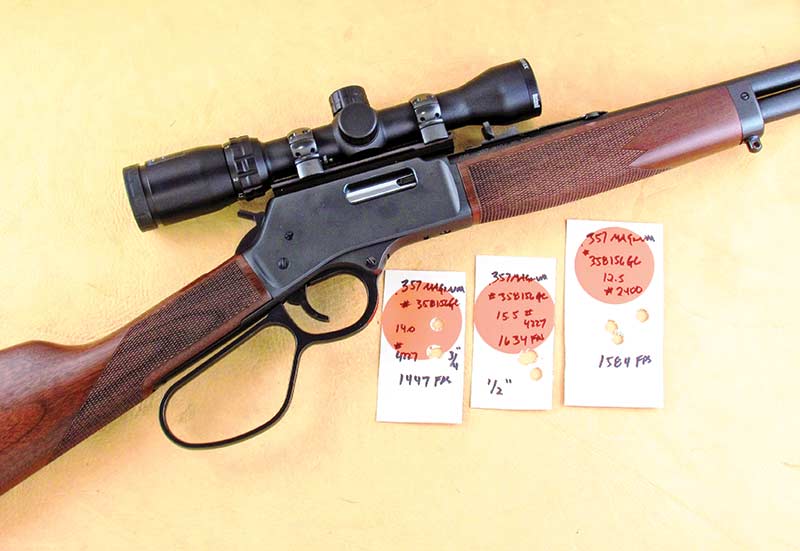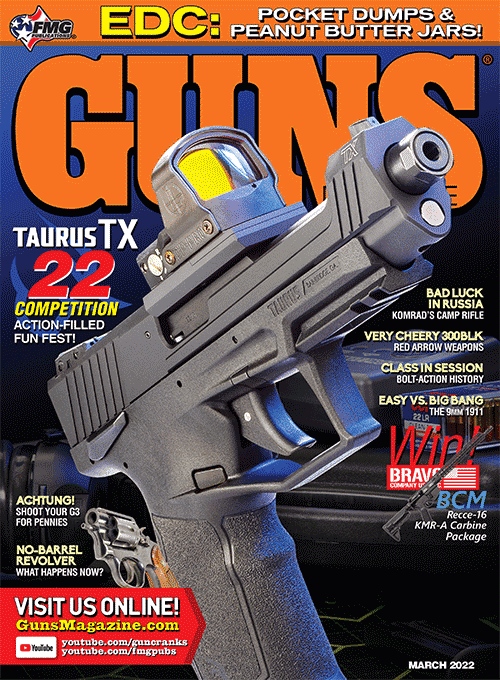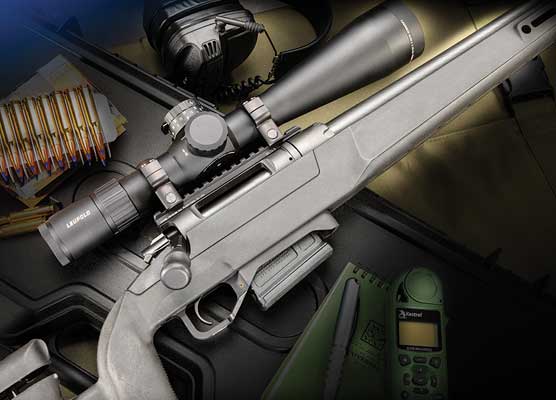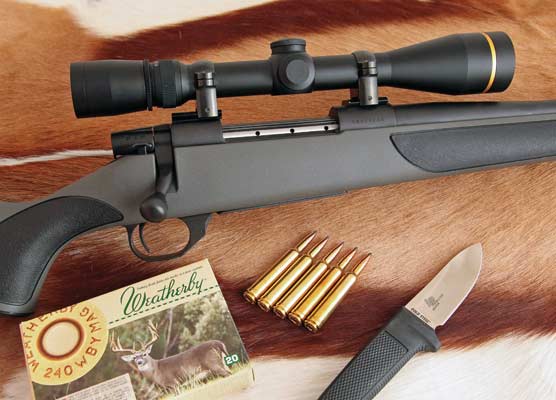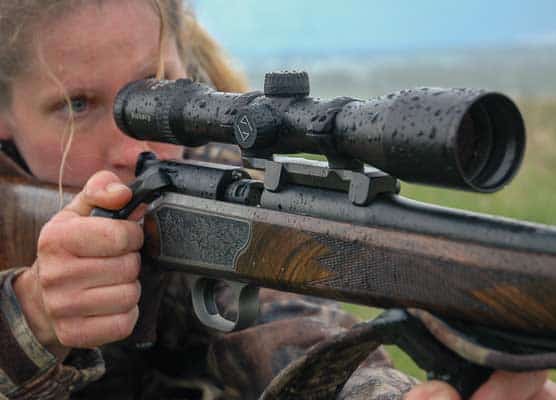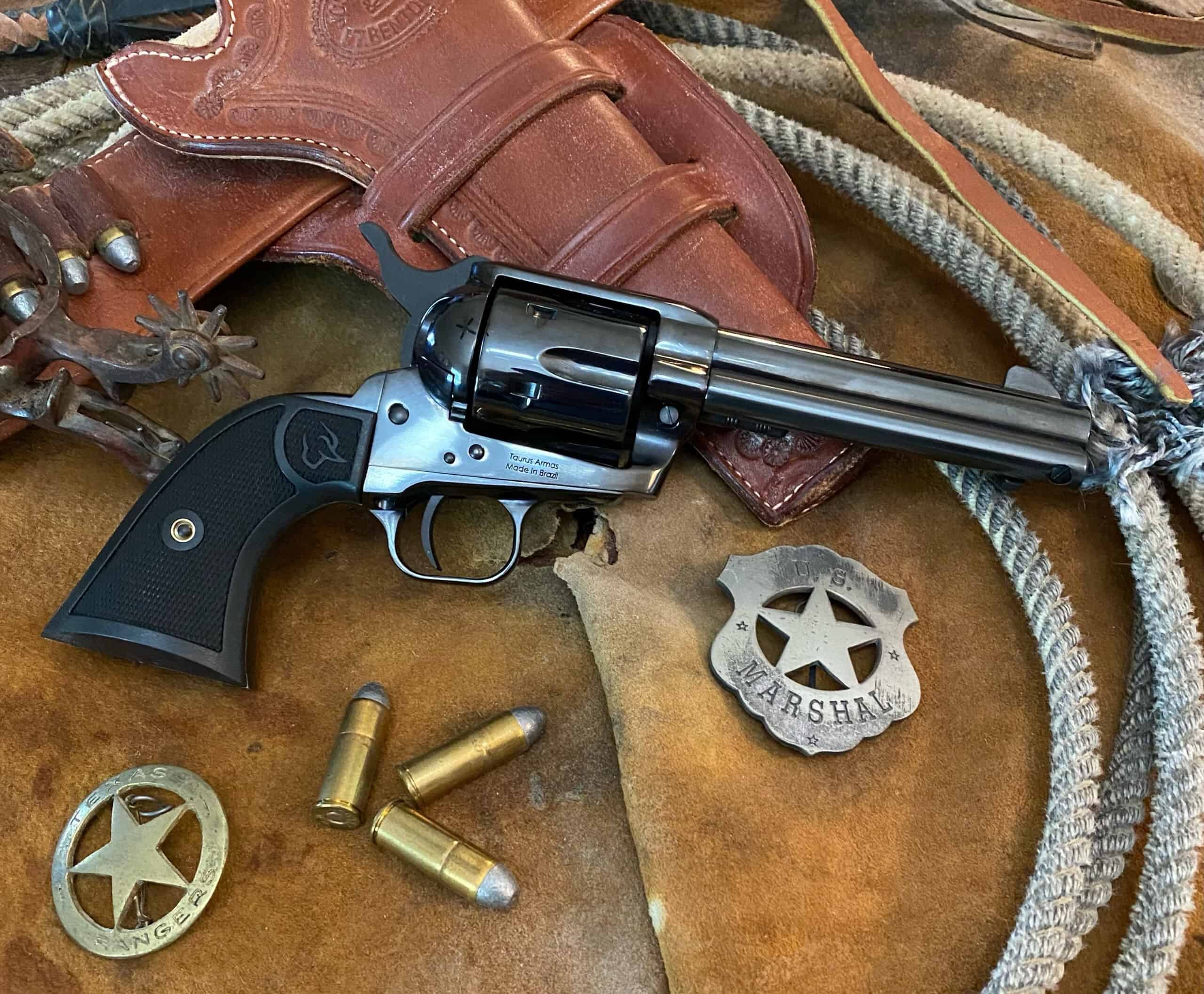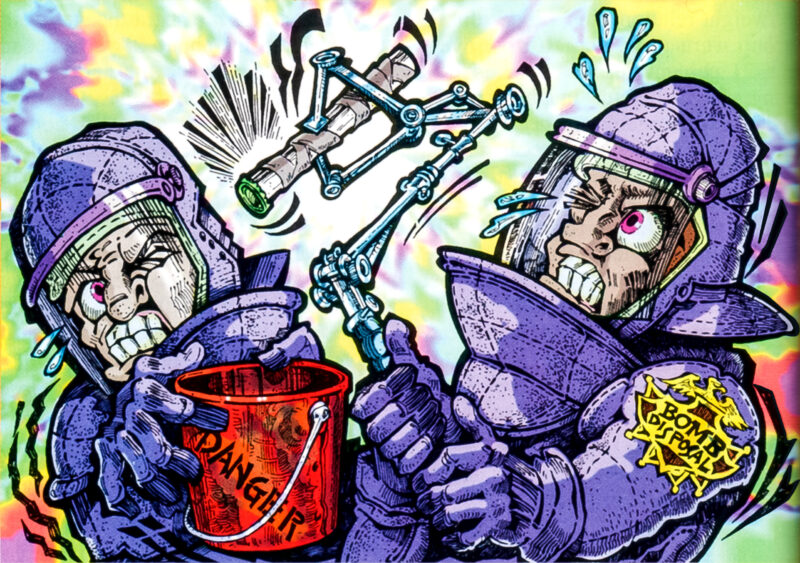Henry Big Boy Steel
.357 Magnum
A Must-Have Lever For Your Stable
We are blessed with a large proliferation of sixguns, semi-automatic pistols and leverguns to choose from. However, especially when it comes to leverguns, there are absolute essentials. I will not argue the first choice is a .22. and I simply cannot imagine life without a quality .22 levergun. After a .22 has been selected, the next step is a .357 Magnum levergun.
The .357 Magnum arrived in 1935 and it took a while for the levergun manufacturers to catch up so shooters looked to the Winchester Model 1892 in .32-20 to be converted to the .357 Magnum cartridge. The first factory-produced Magnum-chambered levergun was not the .357, but rather the .44 Magnum which arrived in 1964, and I added one in 1966. The .357 Magnum levergun did not arrive until 1979 and I soon purchased one to find out what an absolutely grand rifle it is to have.
New-Old Name
Henry Repeating Arms goes back to the to the mid-1990s with their first rifle, the Model H001 Classic .22. They soon became known as one of the slickest operating rimfire rifles available and popular enough to already have reached 1 million sales. I presented one of these to my grandson who used it to keep the ground squirrel population down in their place in Montana. Today Henry Repeating Arms is the most prolific rifle manufacturer in the United States with not only leverguns in .22, .327 Magnum, .357 Magnum, .41 Magnum, .44 Magnum, .44-40 and .45 Colt, but also “Long Ranger” versions in traditional rifle chamberings. My first Henry was a .22 and this was soon followed by a .44 Magnum, and now my trio consists of these two as well as a recently added .357 Magnum.
The Henry Big Boy .357 Magnum is not a copy of the original Henry of 1860 and it is also quite unlike any other leverguns out there. Two things about the Henry make it much easier to handle if one is going to shoot a long string of cartridges. First, is the weight. Normally we look for a levergun chambered in a sixgun cartridge to be light and easy to handle. However, if one is going to shoot hundreds of rounds at a time, the extra weight is valuable. The Henry .357 Magnum Carbine weighs nearly 7 lbs., even more with the addition of a scope. Add the generous recoil pad provided and this is definitely a centerfire rifle I can shoot all day long. Okay, a half a day, as the body does tire easily.
No Sore Fingers
One of the things I really appreciate about the Henry, especially when I’m going to be doing a lot of shooting, is how it is loaded. When shooting a sixgun-cartridge-chambered levergun, I often employ a wooden dowel to help push the cartridge past the loading gate without acquiring sore fingers. The original 1860 Henry loaded through a tube from the front (just as with many .22 rifles today). The 1866 Winchester provided a loading gate on the side of the frame just as all centerfire Winchester and Marlin leverguns from that time forward. Henry Repeating Arms has taken a giant backward step by reverting to the old original method. The Henry Big Boy does not have a loading gate but rather loads just like the conventional .22 levergun through a slot under the barrel. To load the knurled head of the inner magazine tube, the barrel is turned until it releases, then pulled forward to expose the cartridge-shaped slot. Cartridges are loaded base down, the inner tube is then pushed back in place in the magazine tube and locked. After a day’s shooting, my fingers feel just as fine as they did to start with.
(Editor’s note: Henry has recently added a side-gate to this model, giving two loading options.)
Choices
Henry Repeating Arms offers many different models. Mine is the carbine length with a 17-1/2″ barrel and a modified large loop lever. I do not care for the “John Wayne/Rifleman” large loop levers, however, the Henry version is somewhere midway between this and the standard lever and I find it very comfortable and easy to operate. It would certainly be appreciated in cold weather when wearing gloves.
This Henry .357 Magnum is blued steel with an American walnut stock fitted with a black solid rubber recoil pad. The stock is also fitted with sling swivel studs. Sights are semi-Buckhorn style, however, since the top of the receiver is drilled and tapped for a scope base, I went directly to this option of mounting a scope.
My first .357 Magnum, as mentioned earlier, goes back almost 40 years. However, as the grandkids have arrived, now 14 in number, I have been in the process of adding one for each of them to have eventually. In a one-month period, I purchased three .357 Magnum leverguns. The Henry was the only one that needed nothing to be done to it except shooting. The other two came with 7 to 8 lbs. trigger pulls that I had taken down below 4 lbs. for easier shooting. Each of them also had a hitch in the loading area that often caused inserted cartridges to catch on something. With its “new-old style” method of loading, the Henry bypassed any of these problems and also came with a usable trigger pull.
Range Tests
The Henry .357 Magnum was test-fired with factory loads from Black Hills as well as handloads with cast bullets and jacketed bullets. Test-firing was accomplished at 45 yards using three shots. It performed exceptionally well. My long-time favorite .357 Magnum bullet for sixguns has been the Ray Thompson-designed Lyman Gas Check Bullet #358156 GC and it also works very well in the Henry. Loaded over 15.5 grains of H4227, muzzle velocity is 1,635 fps with three shots in just 1/2″. The same bullet over 14.0 grains of H4227 does 3/4″ at 1,450 fps while 12.5 grains of #2400 is just under 1,600 fps with a 7/8″ group. It also does just fine with heavy cast bullets. My most-used heavy .357 Magnum bullet is the NEI #200.358GC which, as the number indicates, is a 200-grain bullet. With 11.2 grains of #2400 or 13.0 grains of H110, it is right at 1,400 fps and 1″ groups. This would be my choice for hunting of feral hogs.
Switching to Black Hills 158-JHP .357 Magnum load, I had both an original jacketed hollowpoint and their newer version on hand. They shot right at 1,575 fps and grouped at 1/2″ and 7/8″ respectively. The Hornady 180 Silhouette bullet, which is excellent for penetration, also grouped in 1/2″ and just under 1,600 fps with 12.5 grains of #2400. Some of the best loads for the .357 Magnum are assembled with a powder that is unfortunately no longer available. I am speaking of the H108. With the Speer 140 Jacketed Point or the Sierra Jacketed Hollow Cavity over 15.5 grains of H108 muzzle velocities are 1,685 fps and 1,730 fps, respectively, with groups of 5/8″ and 3/4″, also respectively. This same powder also works very well in the .30 Carbine and I cherish the little bit I have left.
The only problem I encountered with the Henry .357 Magnum Carbine was self-induced when I tried to work it too gently and jammed it. As long as I worked the lever like I was in charge, there were no problems whatsoever. I can’t find anything negative about the Henry .357 Magnum Carbine and give it the highest rating possible. MSRP: $969

